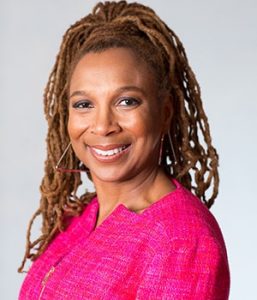The term ‘intersectionality’ was coined in 1989 by American scholar Kimberlé Crenshaw, now a professor at Columbia Law School, to explain the specific experiences of oppression of African-American women. She noted that gender and race were analyzed in different contexts when it came to law, and that this erased what happens to people who are subject to discrimination due to more than one identity dimension. For Crenshaw, to advocate effectively for equity seeking groups, it is imperative to recognize how the convergence of racial and gender stereotypes may play out in different settings.

From 1989 to today, activists have continued to evolve and develop the term to encompass more than race and gender. Intersectionality is now referred to the interplay between any kind of discrimination – for example but not limited to: race, gender, age, socioeconomic class, sexual identity, religion, education, ability or ethnicity.
Currently, many workplaces, organizations and advocates continue to focus on single identity dimensions. “As organizations recognize the deeply-researched benefits of diversity at work, I see more leaders jumping headfirst into gender diversity efforts that do not consider the experiences of all women, particularly women of colour,” writes Ruchika Tulshyan for the Harvard Business Review.
Not only do these efforts fail to consider the unique experience of racialized women, but they also do not consider the unique experiences of other groups. Intersectionality is the concept that a white woman sees and experiences the world differently than a LGBTQ2+ black man, or t an Indigenous woman with a disability.
A study conducted by Catalyst, Day-to-Day Experiences of Emotional tax Among women and Men of Color in the Workplace, revealed that amongst Asian, Black, Latino, and Multiracial respondents, 40% of them expected to experience racial bias in the workplace. While women (40%) were much more likely than men (26%) to expect gender bias. Women of colour (24%) reported being more on guard than men of colour (11%) as they expected to experience both gender and racial bias.
How is intersectionality being addressed?
Recognizing the importance of intersectionality, the Canadian Government developed Gender-based Analysis Plus (GBA+), an analytical process for examining how various intersecting identity factors impact the effectiveness of government initiatives. The design of this tool began in 1970, when the Government of Canada began making commitments to consider women’s issues in policy decisions. In 2011, Status of Women Canada expanded the scope of GBA to GBA+ to ensure that the analysis looked at other diverse identity factors. Considering the use of GBA+ within your organization is one way to ensure that some employees are not being silenced.
Other examples of intersectional programs include the Made-In-Canada Athena Swan Program now called Dimensions: Equity, Diversity, and Inclusion in Canada. The program is modelled on the UK Athena SWAN (Scientific Women’s Academic Network), an internationally recognized initiative that celebrates higher education institutions that have implemented practices to advance EDI in the sciences. In the UK, the program has focused primarily on addressing gender diversity issues. However, Canada has taken a broader lens, and has included all diversity dimensions under the new initiative to reflect the unique reality of Canadian society.
Companies have also established comprehensive equity and inclusion programs that recognize the experiences of all groups. Some of these companies include Hydro One, IBM, Accenture, General Electric (GE), Xerox, CH2M, Microsoft, Deloitte, TELUS and Amec Foster Wheeler. Further, advocates of equity, diversity, and inclusion in the engineering profession have also expanded their efforts beyond a focus on gender equity and parity.
 Is OSPE supporting comprehensive equity and diversity initiatives?
Is OSPE supporting comprehensive equity and diversity initiatives?
OSPE recognizes the importance of achieving equity, diversity, and inclusion in the engineering profession. OSPE relies on the wide range of expertise and experience that members bring to the association to help problem-solve and innovate on issues of importance to stakeholders. The depth and breadth of the OSPE community also helps to strengthen the profession, as it enables us to bring together professionals of all diversity dimensions and engineering backgrounds to help one another learn and grow.
To achieve a more comprehensive approach to our equity, diversity, and inclusion advocacy initiatives, OSPE formed the EDI Committee in 2017. Prior to the creation of this committee, diversity initiatives had focused solely on women in engineering. However, government stakeholders and partner organizations expressed that OSPE must take a leadership role in creating more equitable and inclusive workplaces for all.
While we know anecdotally that many equity-seeking groups continue to be underrepresented in the engineering profession, there is a lack of reliable and comprehensive data on this matter. This is one of the key priorities of the EDI committee, to collect data to understand the current diversity landscape of the profession and identify gaps.
What can you do to advance intersectional thinking?
- Enforce accountability: Ensure that leaders and employees are supported and held accountable for inclusive leadership behaviours. All of us have a role to play in creating workplaces where everyone is valued and heard, with fair opportunities to succeed.
- Be open minded: Normalize talking openly about differences—paying particular attention to listening to and affirming experiences that bridge gender, race, and ethnicity.
- Know your privilege: To help start to understand the additional degrees of difficulties others may be facing, it’s important to understand our own privilege. Instead of it being a personal attack, it’s a way of noting your own history and how it may have spared you from the oppressions being faced by others.
- Prioritize listening and making space for others: If you’ve self-reflected and feel ready to support your peers, the best way to do it is to give them your full attention and listen. Listening also allows you to take a step back. Advocating for others doesn’t have to mean speaking for them – it can also mean giving them the space to speak. Don’t discount the subtle ways people can feel singled out or connected to their colleagues.
- Knowing that words have power: Imagine all the subtle yet extremely hurtful microaggressions you may face for falling into one of the marginal groups. Now imagine a peer that falls into more than one of these groups. Oversimplifying through language can cause others to feel excluded from the conversation.
Intersectionality is a broad concept – and it’s still widely debated even today. However, acknowledging how different types of discrimination intersect and increase biases will help us ensure that everyone benefits from the principles of equality and equity.




